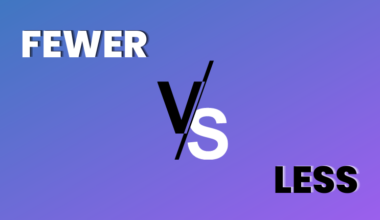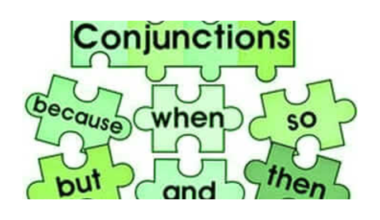You may have seen the terms “fullstack,” “full stack,” and “full-stack” being used interchangeably, but they actually have distinct meanings and proper usages.
Understanding when to use each term can help you communicate more effectively and present yourself professionally in the tech world. This blog post is meant to clear up the confusion.
Key Takeaways
- Understand the definition and role of a fullstack developer
- Establish the differences between “fullstack or full stack or full-stack” terminology
- Look at common misconceptions surrounding the terms.
- Know why proper terminology matters
- Acquire tips to ensure you’re using the correct terminology in your tech writing
What Is a “Fullstack” or “Full Stack” or “Full-stack” Developer?
You might have heard about “fullstack developer,” “full stack developer,” or “full-stack developer.” But what does it mean?
Fullstack developers are very valuable in the tech world. They can handle many tasks and help at different stages of web development.
A fullstack developer knows both the front-end and back-end of web development. They use many programming languages and tools. This lets them connect the user interface with the server-side logic smoothly.
Now, the main argument is about the right term for a developer who knows both front-end and back-end tech. These terms might seem the same, but they affect your reputation in tech to an extent.
To get through this, knowing the differences between each term is key.
Differences Between The Terms “Fullstack Or Full Stack Or Full-Stack”
Full Stack
The term full stack refers to the complete set of technologies used to build a web application. It encompasses everything from the user interface (front-end) to the server and database (back-end).
A full stack developer is someone skilled in both areas, allowing them to create a fully functioning application.

Examples Of Its Application In Job Titles and Descriptions
In job listings, you might see titles like “Full Stack Developer” or “Full Stack Engineer.” These titles indicate that the candidate is expected to have knowledge of both front-end technologies (like HTML, CSS, and JavaScript) and back-end technologies (like Node.js, Python, or Ruby).
Descriptions often include tasks such as designing user interfaces, building APIs, and working with databases, clearly showing the breadth of skills required for full stack roles.
Fullstack
“Fullstack” is often used in a more casual or modern context, especially in informal discussions among developers. It reflects the same idea as “full stack” but tends to convey a more relaxed tone.
This variation is gaining popularity in online forums, tech blogs and among younger developers who prefer brevity in their language.
Contexts for its usage
You’re likely to encounter fullstack in social media posts, coding meetups, or casual conversations. For example, someone might say, “I’m a fullstack developer working on a new project,” when chatting with peers.
This usage creates a sense of community and informality, making it more relatable for discussions in tech circles.
Full-Stack
The hyphenated form full-stack is often used in more formal contexts, such as technical writing, academic papers, or industry publications.
This version emphasizes the combination of skills in a more structured way, which can enhance clarity in more serious discussions.
Instances where full-stack is preferred
You might consider using “full-stack” in professional documents, research papers, or when creating content for a wider audience.
For instance, an article about the benefits of full-stack development might use “full-stack” to ensure it meets formal writing standards.
This attention to detail can enhance the credibility of the content and clarify the concept for readers who may not be as familiar with the terminology.
Common Misconceptions
Misunderstanding
One of the biggest myths is that the term “fullstack or full stack or full-stack is interchangeable.
Fact
Their usage can vary based on context. For example, full stack is often seen in formal job titles, while fullstack might pop up in casual conversations.
Misconception
Another misconception is that the choice of term reflects a developer’s expertise.
Fact
In reality, it’s more about the setting and audience than skill level.
Why Proper Terminology Matters
Clarity in communication: Using the right term in tech writing is key to getting your message across clearly.
Have you ever noticed how smooth writing enhances understanding? Choosing the right term and maintaining consistency makes this possible.
By sticking to one term, you help your audience focus on your message rather than getting distracted by varying terms.
Professional communication: In tech, being precise and professional can make you stand out helping you communicate as a knowledgeable and confident person.
Build credibility: Knowing the right terms depicts a level of expertise in the field, better connecting and building trust with your audience.
Now let’s look at some suggestions on how to ensure you are not mixing up the terms “fullstack, full stack or full-stack”
Tips For Using The Right Term
- Learn the Definitions: Understand what “fullstack or full stack or full-stack” means in software development. Knowing this helps you pick the best term to describe someone’s role and skills.
- Stick to One Term: Use the term you’ve chosen consistently in your writing. Switching between different terms can confuse readers and hurt your credibility.
- Keep Up with Trends: Watch for new trends and best practices in tech. Terms and standards can change, so it’s vital to stay current with your writing.
- Proofread Thoroughly: Always check your work before sharing it. Make sure you’ve used the correct term and it fits the context of your content.
- Ask for Feedback: If you’re not sure about the right term, ask experts or work with colleagues who know more about tech.
Remember, using the right term is much more than just being accurate.

Conclusion
In the world of web development, knowing when to use “fullstack or full stack or full-stack” can make a big difference in how you communicate your skills and ideas.
Each term has its place, whether in a job application, a casual conversation, or a technical document. By understanding the subtle distinction in these terms, you can present yourself more clearly and professionally.
So, the next time you’re writing or chatting about your work, consider your audience and the context whether you are aiming for a formal tone or something more relaxed.
If you found this write-up helpful, share with others.







